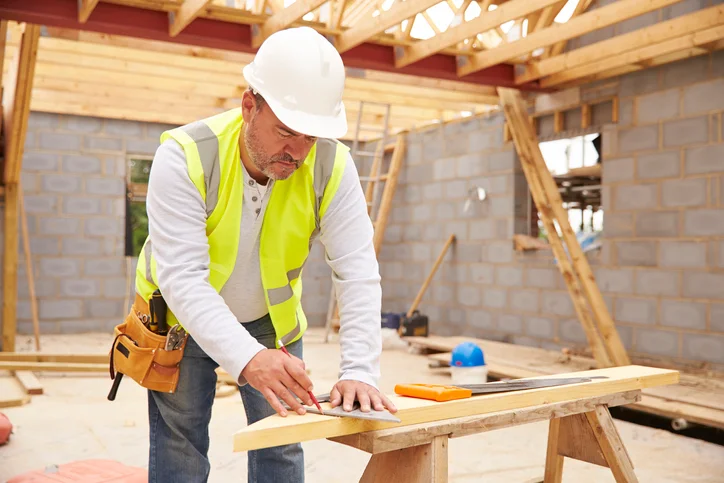
When it comes to carpentry services, the industry is constantly evolving with new trends and technologies. From sustainable practices to innovative designs, modern carpentry services have a lot to offer. One such trend making waves is Composite Carpentry, offering durable and versatile materials for a variety of applications. Whether you are a homeowner looking to renovate your space or a business owner in need of custom furniture, it's essential to stay updated on the latest trends in carpentry. In this article, we will explore the top trends in modern carpentry services, including Composite Carpentry, that are shaping the industry today.
1. Sustainable Materials and Practices
One of the most significant trends in modern carpentry services is the emphasis on sustainability. As the world becomes more environmentally conscious, carpenters are opting for sustainable materials and practices to reduce their impact on the planet. Some of the sustainable practices in modern carpentry include:
• Reuse and Recycle:
Many carpenters are now using reclaimed wood and materials to create unique pieces of furniture. This not only reduces waste but also adds character to the finished product.
• Non-Toxic Finishes:
Carpenters are moving away from traditional finishes that contain harmful chemicals and opting for non-toxic alternatives. This shift towards eco-friendly finishes ensures a healthier indoor environment.
• Energy-Efficient Designs:
Modern carpentry services are also focusing on creating energy-efficient designs that help reduce energy consumption in homes and businesses. From installing insulated windows to designing eco-friendly furniture, carpenters are incorporating energy-efficient practices into their work.
2. Customization and Personalization
Another popular trend in modern carpentry services is the demand for customization and personalization. Customers are increasingly looking for unique, one-of-a-kind pieces that reflect their individual style and preferences. Some ways in which carpenters are meeting this demand include:
• Bespoke Furniture:
Carpenters are creating custom furniture pieces that are tailored to the specific needs and preferences of their clients. Whether it's a handmade dining table or a built-in wardrobe, bespoke furniture adds a personal touch to any space.
• Unique Designs:
Instead of opting for mass-produced furniture, customers are now seeking out carpenters who can create custom designs that stand out. From intricate carvings to unconventional shapes, unique designs are a major trend in modern carpentry services.
• Personalized Finishes:
Carpenters are offering a wide range of finishes and materials for customers to choose from, allowing them to personalize their furniture to suit their tastes. Whether it's a matte finish or a bold color, customers can now customize every aspect of their furniture.
3. Technology Integration
Technology is rapidly changing the way carpentry services are delivered. From design software to automated machinery, modern carpenters are incorporating technology into every aspect of their work. Some of the ways in which technology is influencing modern carpentry services include:
• 3D Design Software:
Carpenters are using 3D design software to create detailed renderings of their projects before they are built. This allows clients to visualize the final product and make any necessary changes before construction begins.
• CNC Machines:
Computer Numerical Control (CNC) machines are revolutionizing the way carpenters craft wood. These automated machines can cut, carve, and shape wood with precision, allowing for intricate designs that were once impossible to achieve by hand.
• Smart Tools:
From laser levels to digital measuring tapes, carpenters are using a variety of smart tools to improve accuracy and efficiency on the job site. These tools help carpenters work faster and more precisely, ultimately leading to better results.
4. Collaboration and Networking
In the world of modern carpentry services, collaboration and networking are key trends that are shaping the industry. Carpenters are increasingly working together with other professionals, such as interior designers and architects, to create cohesive and well-designed spaces. Some of the benefits of collaboration in modern carpentry services include:
• Enhanced Creativity:
By collaborating with professionals from other disciplines, carpenters can bring fresh ideas and perspectives to their work. This cross-pollination of ideas often leads to more creative and innovative solutions.
• Expanded Skill Sets:
Working with other professionals allows carpenters to learn new skills and techniques that they can incorporate into their own work. This constant learning and growth help carpenters stay competitive in the industry.
• Increased Visibility:
Networking with other professionals in the design and construction industry can help carpenters expand their client base and gain exposure to new opportunities. Building strong relationships with other professionals can lead to a steady stream of referrals and projects.
Conclusion
Modern carpentry services are constantly evolving to meet the needs and demands of today's customers. From sustainable practices to customization and technology integration, carpenters are embracing new trends that are reshaping the industry. By staying informed about these top trends in modern carpentry services, customers can make more informed decisions when hiring a carpenter for their next project.
